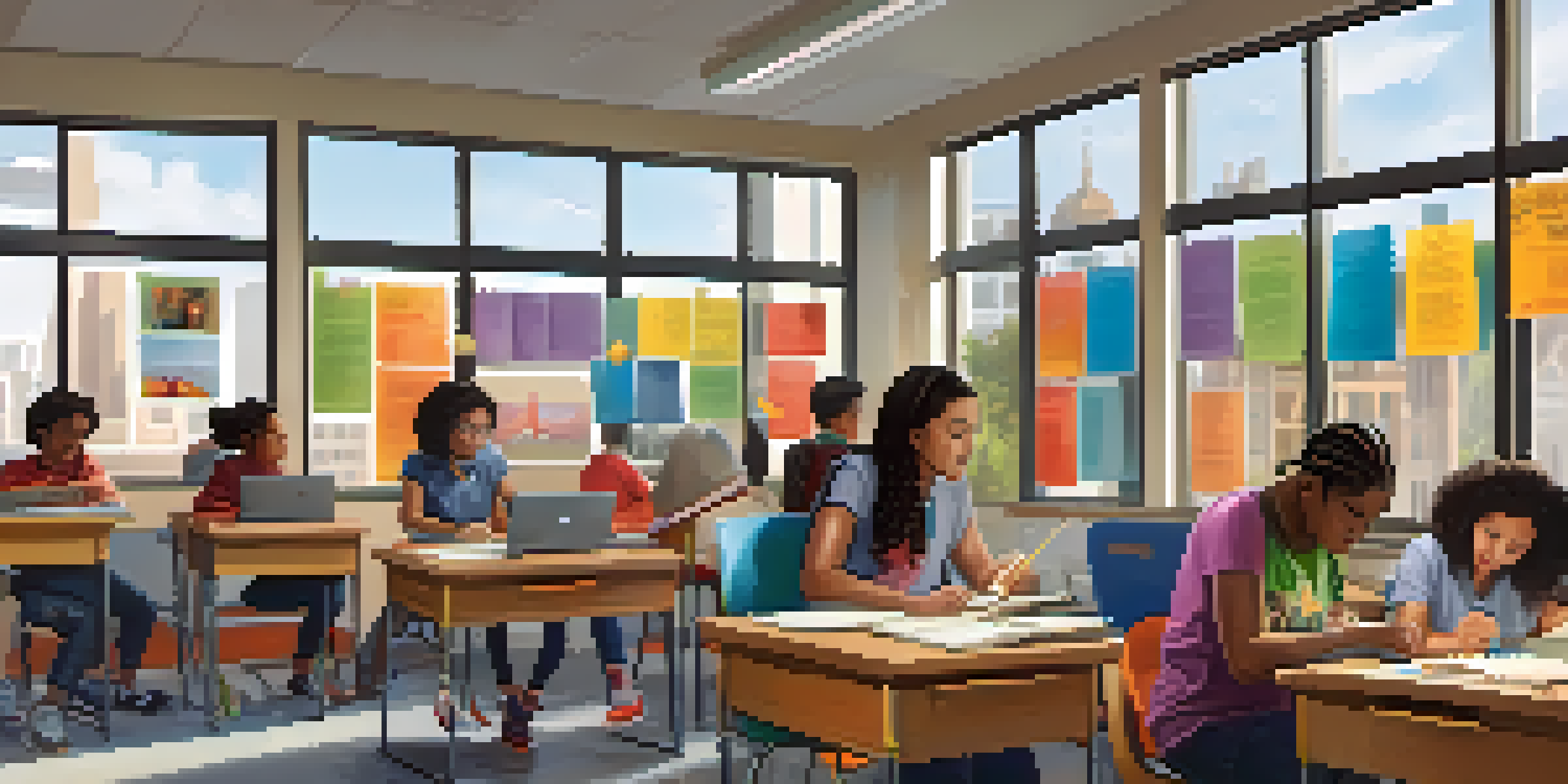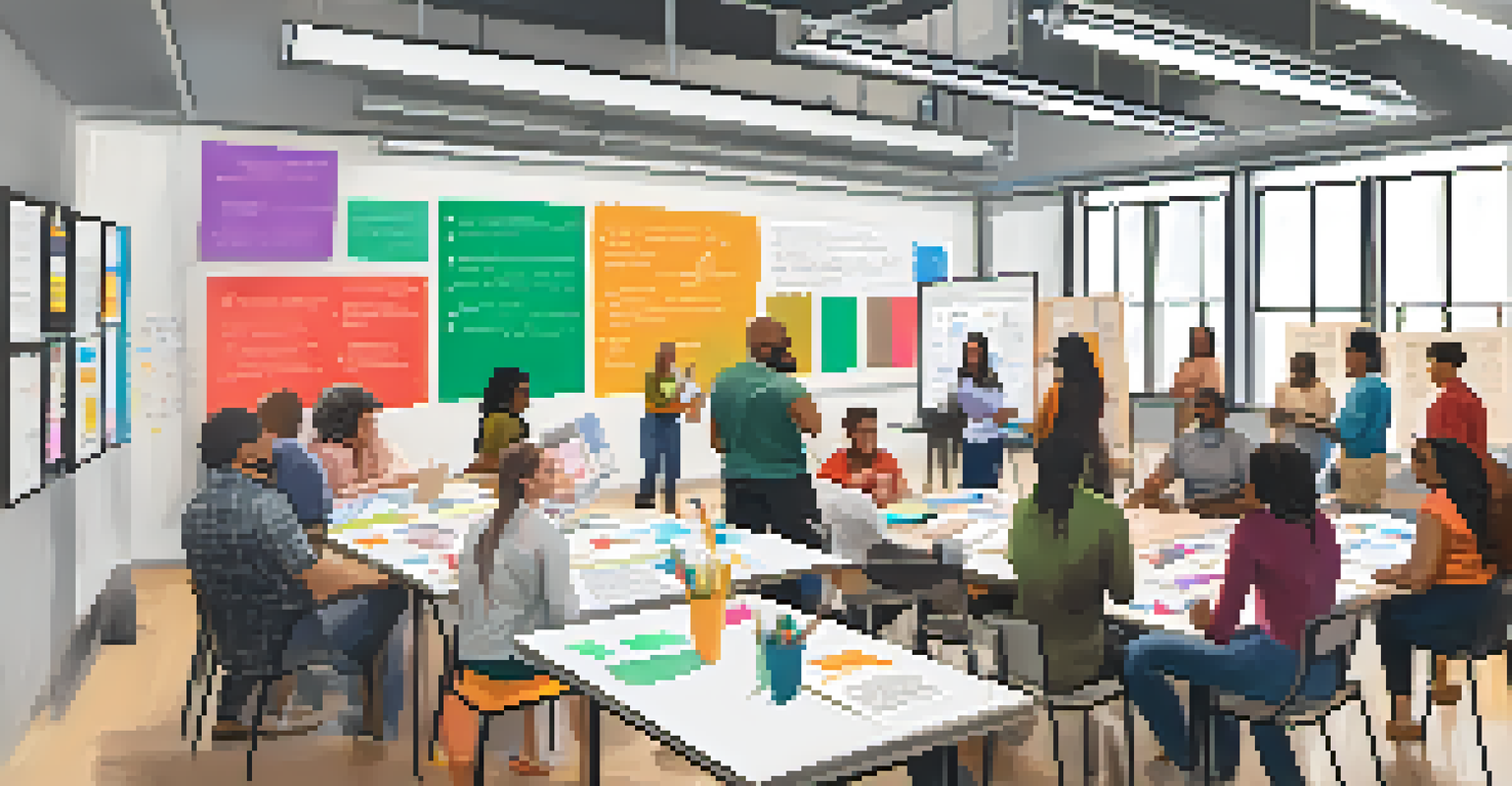Creating Inclusive OER: Addressing Diverse Learner Needs

Understanding the Importance of Inclusive OER
Inclusive Open Educational Resources (OER) play a crucial role in education by ensuring that all learners, regardless of their backgrounds or abilities, have access to quality materials. This accessibility is not just a nice-to-have; it’s essential for fostering equitable learning environments. By embracing inclusivity in OER, educators can create an atmosphere where every student feels valued and empowered to succeed.
Education is the most powerful weapon which you can use to change the world.
When we talk about inclusivity, we’re looking at various aspects, including cultural, linguistic, and disability-related needs. For instance, a student with visual impairment should have access to materials that are compatible with screen readers. Similarly, multilingual learners benefit from resources that cater to different languages, allowing them to engage more fully with the content.
Ultimately, creating inclusive OER is about recognizing the diversity of learners and designing resources that reflect, support, and celebrate this diversity. It’s a commitment to not only provide equal access but also to enhance the overall educational experience for all students.
Identifying Diverse Learner Needs in Your Audience
To effectively create inclusive OER, it’s essential to first identify the diverse needs of your learners. This might involve conducting surveys, interviews, or focus groups to gather insights directly from students. By understanding their backgrounds, experiences, and challenges, you can tailor your resources to better meet their needs.

For example, consider a classroom with students from various cultural backgrounds. Some may require additional context or explanations for certain concepts that might be unfamiliar. By incorporating relevant examples and cultural references, you can make the learning experience more relatable and engaging for everyone.
Inclusivity Enhances Learning Equity
Inclusive Open Educational Resources (OER) ensure that all learners, regardless of their backgrounds or abilities, have access to quality materials, fostering equitable learning environments.
Additionally, don’t overlook the needs of learners with disabilities. Consulting with experts or organizations that specialize in accessibility can provide valuable guidance in identifying the necessary adaptations to make your OER more inclusive. This proactive approach ensures that no learner is left behind.
Designing Accessible and Engaging OER
Once you have a clear understanding of your learners' needs, the next step is to design OER that are both accessible and engaging. This can involve using a variety of formats, such as videos, infographics, and interactive modules, to cater to different learning preferences. By providing options, you empower students to choose the format that resonates most with them.
Inclusion is not a matter of political correctness. It is the key to growth.
It’s also important to consider the visual elements of your OER. For example, using high-contrast colors and readable fonts can significantly enhance accessibility for students with visual impairments. Additionally, incorporating alt text for images and captions for videos ensures that all learners can access the information presented.
Engagement is key in the learning process. Interactive elements, such as quizzes or discussion prompts, can encourage participation and deeper understanding. By making your OER more interactive, you not only cater to diverse learning styles but also foster a sense of community among learners.
Utilizing Diverse Perspectives in Content Creation
Incorporating diverse perspectives in your OER not only enriches the content but also reflects the varied experiences of your learners. This can involve including voices from different cultures, genders, and backgrounds in case studies, examples, or even the authorship of the materials. By showcasing a range of perspectives, you help learners feel seen and represented.
For instance, if your OER covers historical topics, consider including narratives from historically marginalized groups. This not only broadens the scope of the learning material but also encourages critical thinking and discussion around different viewpoints. It’s an opportunity to challenge biases and promote inclusivity in the classroom.
Engagement Through Diverse Formats
Designing OER with various formats and interactive elements caters to different learning preferences, enhancing both accessibility and student engagement.
Moreover, collaborating with individuals from diverse backgrounds during the content creation process can provide insights that you might not have considered. This collaboration can lead to a more comprehensive and inclusive resource that genuinely addresses the needs of all learners.
Implementing Feedback Mechanisms for Continuous Improvement
Creating inclusive OER is not a one-time task; it requires ongoing evaluation and improvement. Implementing feedback mechanisms allows you to gather insights from learners about their experiences with the materials. This can be done through surveys, suggestion boxes, or informal discussions, all aimed at understanding what works and what doesn’t.
For example, after a course is completed, soliciting feedback can reveal areas where learners struggled or felt unsupported. This information is invaluable for refining your resources and ensuring that they remain relevant and effective for future cohorts. It’s a way of demonstrating to students that their voices matter and that you are committed to their success.
Additionally, keeping an eye on emerging trends and best practices in inclusive education can inform your updates. The landscape of education is constantly evolving, and staying informed ensures that your OER continues to meet the diverse needs of learners effectively.
Promoting Your Inclusive OER to Reach More Learners
Once your inclusive OER is developed, the next step is to promote it effectively to reach a wider audience. Utilizing social media platforms, educational forums, and community networks can help spread the word about your resources. Highlighting the inclusive features of your OER in promotional materials can attract learners who might benefit from these adaptations.
Creating partnerships with educational institutions, libraries, or organizations focused on diversity and inclusion can also amplify your reach. These partnerships can provide additional channels for distributing your resources and connecting with learners who may not be aware of them otherwise.
Feedback Fuels Continuous Improvement
Implementing feedback mechanisms allows educators to refine their inclusive OER based on learner experiences, ensuring the resources remain relevant and effective.
Furthermore, consider hosting webinars or workshops to showcase your OER and provide insights into how they address diverse needs. This not only raises awareness but also creates a platform for dialogue around inclusivity in education, fostering a community of practice that values and prioritizes these efforts.
Reflecting on the Impact of Inclusive OER
Reflecting on the impact of your inclusive OER is vital for understanding how well you have addressed diverse learner needs. Gathering data on student engagement, performance, and satisfaction can offer insights into the effectiveness of your materials. This reflection helps you celebrate successes while identifying areas for further enhancement.
For instance, analyzing course completion rates or feedback scores can reveal whether your inclusive OER has positively influenced student experiences. If students report feeling more engaged and supported, it’s a strong indication that your efforts are making a difference.

Moreover, sharing these reflections with your educational community can inspire others to adopt similar practices. By showcasing the positive outcomes of inclusive OER, you contribute to a larger movement towards equity in education, encouraging more educators to prioritize inclusivity in their own resources.